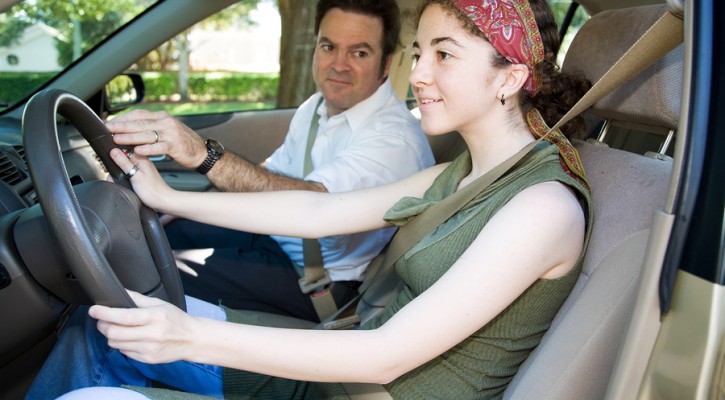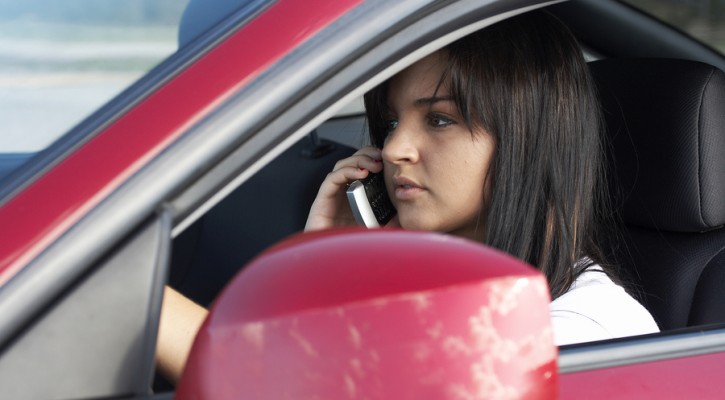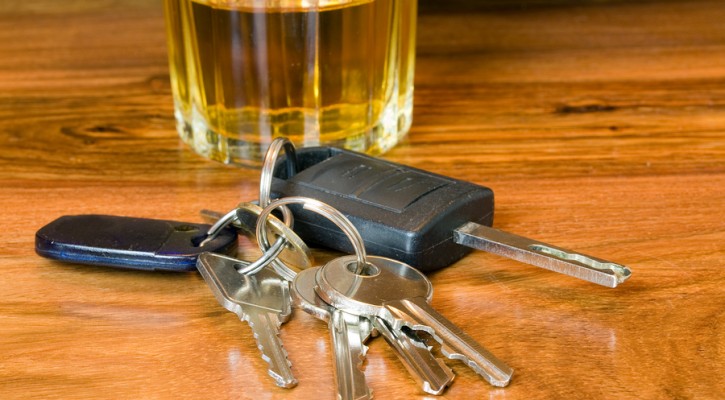Tag Archive: teen driving

Setting a Good Driving Example for Your Teen
February 20, 2009
Many parents hope that when they teach their teenagers how to drive, their children will do as they say, not as they do, when it comes to driving. But this hope may be unrealistic. Research indicates that children mimic their parents’ driving behaviors from as young as two years of age, so a parent’s bad driving habits may be deeply ingrained by the time training for a driver’s license begins. And teens are notoriously intolerant of what they view as hypocritical advice. When this is combined with over-confidence in their own abilities, your teen could develop bad driving habits early in the training process.
Before you begin teaching your teen to drive, it is a good idea to review and correct any poor driving habits you have developed over the years of driving. Remember that when your teen repeats these behaviors, s/he is doing so without the benefit of your years of driving experience and highly developed driving skills.
A good first step is to review your driving handbook. This will also assist you in knowing what important beginning driver training concepts to reinforce during lessons with your teen. As you review the handbook, make notes on the driving behaviors you need to change. For example, many drivers become lax about using the turn signal every time they change lanes, pull out from a parking space, enter or leave an expressway, or turn at intersections.
Lax driving behaviors are more likely to occur in familiar settings, so pay particular attention to your driving as you travel to and from work and school and on errands. Pretend that these routes are unfamiliar to you. How would you change your driving behavior? Take different routes to and from work, school and errands. Does your driving improve?
Third, begin training early by talking to your teen about your own driving behaviors. As you drive, point out potential hazards as you scan ahead. When you take action, explain what you are doing and why.
Teaching teens to drive should be a process, not an event. It’s important to realize that whether you intend to or not, you are teaching your child to drive every time you get behind the wheel with your child as a passenger.

Teaching Your Teen to Drive
February 3, 2009
Teaching your teen to drive is an exciting and highly anticipated rite of passage that means greater independence lies ahead. It may also be a time of mixed emotions. Many parents look forward to the day when they won’t be their teen’s main source of transportation, but they may also feel anxious about how safe their teen will be behind the wheel.
A plan of action will reduce the anxiety you feel about teaching your teen to drive. There are several actions you can take before you even allow your teen behind the wheel.
New drivers copy driving behaviors they have witnessed for years as passengers. Since they have probably ridden most often with parents, those behaviors are the ones they will imitate. To some parents, this is a somewhat frightening prospect. To make matters worse, teens who integrate risky driving practices into their own behavior do so without the benefit of years of experience and highly developed skills. Before you begin teaching your teen to drive, consider your own driving habits and make a commitment to correct any careless or reckless behavior and model good defensive driving practices consistently.
Another important aspect of teaching new drivers is good communication. Teens tune out lectures, so parents should work on developing a conversational rapport about safe driving with their children. Try to be concise; avoid going off on tangents. Ask for your teen’s opinion on hazards in your driving environment. For example, if you see children playing near the street, ask your teen to explain the risks and how to handle them. You can fill in details garnered from your own experience after your teen has a chance to be heard. Although it’s important to talk about driving risks, avoid horror stories. Instead, look for driving-related newspaper articles or subscribe to the National Safety Commission’s Safe Driving Teen Monthly Bulletin and discuss the articles together.
To help your teen understand more about the costs and responsibility of driving, review your insurance policy together, visit your insurance company’s website together, or pay a joint visit to your insurance agent’s office. Explain, or ask your agent to explain, the purpose of motor vehicle insurance. Discuss the cost of insurance and how the cost of your policy might increase or decrease. Ask your insurance agent whether a driver education course will result in a discount. Find out how much your insurance premium will increase after a single ticket or crash.
For many parents, driving is such an ingrained habit that they must refresh their knowledge about fundamental driving concepts. Doing so can only help you to be a better driving instructor to your teen, which in turn will help your teen be a better, safer driver.

Five Worst Teen Driving Mistakes: Part Five
January 20, 2009
Most parents live in dread of the day their teens get a driver’s license and get behind the wheel alone. Their concerns are well-founded, since teen drivers have the highest death rates in car crashes of any age group. Motor vehicle crashes are the number one cause of death among Americans aged 15-20.
In this five-part series, we’ll discuss the five worst teen driving mistakes:
-They don’t wear safety belts.
-They drink and drive.
-They panic/overcorrect in emergency situations.
-They drive too fast for conditions.
-They ride with other teens.
In this, part five of the series, we’ll discuss a frequent cause of injury and death in traffic crashes for teens – even when they aren’t driving. Riding with other teens is a high-risk activity that your teen will probably participate in even before earning a driver’s license.
No matter how skilled a driver your teen is, s/he is still at risk when riding in a vehicle driven by another teen. And it’s common for teens to pack a vehicle full of friends who are unlicensed or who don’t have access to a vehicle or to save money on gas. Unfortunately, they also do this because it’s fun to listen to music, laugh and talk – huge distractions for an inexperienced driver. According to the National Highway Traffic Safety Administration, crash risk for teenage drivers increases incrementally with one, two or three or more passengers. With three or more passengers, fatal crash risk is about three times higher than when a beginner is driving alone. About two-thirds of all crash deaths of teens that involve 16-year-old drivers occur when the beginners were driving with teen passengers.
Studies indicate that passenger restrictions can reduce this problem. Passenger restrictions for teen drivers already exist in many states as components of graduated licensing programs. For parents, knowing and enforcing these passenger restrictions means reducing their child’s risk of injury or death in a traffic crash. While this sounds easy enough, many parents are unfamiliar with the graduated driver licensing laws in their state. And even those who are familiar may neglect to enforce the restriction. A 2000 survey by the Insurance Institute for Highway Safety found that 84 percent of parents of young drivers favored restricting teenage passengers during the first six months of licensure. But some studies indicate that parents leave enforcement of most graduated licensing restrictions to law enforcement – a mistake, since law enforcement does not have the ability to monitor the behavior of an individual teen the way parents do.
To help ensure the safety of your teen, learn the graduated driver’s licensing laws in your state, and make enforcement of them part of your house rules. Monitor your teen’s driving behavior, and review the restrictions often.
Although parents often want their teens to get driver’s licenses so they can transport themselves to school, work and social activities, parents also worry about the risks. Make sure your home driver education program is complete by using a log to keep track of your teen’s progress.

Five Worst Teen Driving Mistakes: Part Two
December 19, 2008
Most parents live in dread of the day their teens get driver’s licenses and get behind the wheel on their own. Their concerns are well-founded, since teen drivers have the highest death rates in car crashes of any age group. Motor vehicle crashes are the number one cause of death among Americans aged 15-20. But parents can help their teens be a safer driver even after they are licensed, particularly by paying attention to common risk factors. In this five-part series, we’ll discuss the five worst teen driving mistakes:
- They don’t wear safety belts.
- They drink and drive.
- They panic/overcorrect in emergency situations.
- They drive too fast for conditions.
- They ride with other teens.
In this, part two of the series, we’ll discuss the risk teens take by driving after drinking alcohol. Teens are at far greater risk of death in an alcohol-related crash than the overall population, despite the fact they cannot legally purchase or publicly possess alcohol in any state. (National Highway Traffic Safety Administration)
Did you know?
- During 2006, 7,643 15- to 20-year-old drivers and motorcycle operators were involved in fatal traffic crashes across the nation, 1,377 (18 percent) of whom had a blood alcohol concentration (BAC) of .08 or higher.
- Nationally, 64 percent of all drivers or motorcycle operators ages 15 to 20 who were involved in fatal traffic crashes and had a BAC of .08 or higher died as a result of the crash.
- Violators of underage drinking laws often face a trip to jail, the loss of their driver’s license, and dozens of other unanticipated expenses including attorney fees, court costs, and other fines. Plus, there is the added embarrassment, humiliation, and potential loss and consequence related to academic eligibility, college acceptance, scholarship awards, and more.
- Most of those killed in alcohol-related crashes involving teen drivers are the young drivers themselves and their passengers.
All states now enforce a minimum drinking age of 21. Nevertheless, alcohol related crashes are still a top safety problem. Make sure your teen understands:
- Alcohol is not actually digested; it’s processed. It’s absorbed directly through the lining of the stomach into the bloodstream. This is why the body feels the effect so quickly.
- Alcohol has its first and greatest effect on the parts of the brain that control judgment and reasoning, the most critical skills needed by drivers. Physical abilities become impaired soon after.
- As more alcohol enters the bloodstream, the area of the brain that controls muscular movements and body control begins to slow down. Even after the driver recognizes danger, the brain takes longer than normal to process the information and react to the danger. Messages the brain sends to different parts of the body might become confused.
- A driver affected by alcohol has a decreased ability to reason clearly and to make sound judgments. However, the driver may feel as though thinking and judging abilities are sharper and quicker than usual.
- Alcohol quickly diminishes the ability to concentrate. A decrease in the ability to concentrate greatly increases a driver’s level of risk. A person’s driving ability can be reduced after only one drink.
- The muscular reactions of a driver who has been drinking can become slow and clumsy. Steering and braking movements can become uncoordinated. The driver might over-steer, brake late or not brake at all. The driver might not be able to negotiate turns properly and safely. Such actions cause drinking drivers to be involved in serious crashes.
Make sure your teen knows that she or he can always call you for a ride, whether the teen is intoxicated or is faced with the prospect of riding with a driver who has been drinking. Make a pact in which you promise to pick up your teen without questions or lectures. You can have a discussion about the issue the following day, when you are calmer and your teen is safe at home.

What is More Dangerous than Being a Teen Driver? Being a Teen Who Rides with One!
November 30, 2008
Many parents know that training their teen to be a good driver is critical to the teen’s safety. But parents also need to limit the number of passengers who ride with their teen and pay attention to the teen drivers their children ride with as passengers. Studies show that the presence of one passenger doubles the fatal crash risk for a teen driver, and the risk increases with each additional passengers. Forty percent of teen motor-vehicle deaths involve passengers.
Motor vehicle crashes are the leading cause of death among American teenagers, accounting for 36% of all deaths of teens aged 15-19. Two-thirds of the deaths of passengers in this age group happen in cars driven by other teenagers.
In a study at Johns Hopkins School of Public Health, researchers discovered that:
- A 16-year-old carrying one passenger is 39% more likely to get killed than one driving alone.
- The likelihood increases 86% with two passengers and 182% with three or more.
- The rate for 17-year-olds is still higher – 48% with one passenger, 158% with two passengers, and 207% with three passengers.
A study by the University of Michigan Transportation Institute said that the most significant risk issues for teen drivers are teen passengers, driving on weekends and driving at night. In addition, the researchers found that 56% of the teen drivers in the study had been in at least one crash.
Even teens seem to understand the risk. A 2008 survey by Erie Insurance Company found that although 91% of teens think they are driving safely, only 34% could say the same of their friends. Ninety-seven percent of the teens surveyed said they had seen other teen drivers participating in risky behaviors such as speeding and not wearing seatbelts. Forty-eight percent said they are easily distracted when friends are passengers. In a separate study by the Children’s Hospital of Philadelphia and State Farm, the number was even higher – 94% of teens said that passengers distracted the driver in some way; for example, by talking on a cell phone or listening to loud music.
In addition to the distraction caused by cell phones and loud music, a study by the National Institute of Child Health and Human Development of the National Institutes of Health found that teenage drivers of both genders were more likely to tailgate and exceed the speed limit if there was a teenage male passenger in the front seat. In fact, when a male passenger was in the vehicle, a quarter of teenage drivers exceeded the speed limit by at least 15 miles per hour. Also, female teen drivers were slightly more likely to tailgate if there was a female teen passenger in the vehicle with them.
Increasing the risk still further is the phenomenon of teen passengers not using seat belts. Studies show that even teens who buckle up as drivers often neglect to wear a safety belt when they are passengers in another teen’s car.
Researchers from Meharry Medical College in Nashville, TN analyzed data from national youth risk behavior surveys collected in 2001 and 2003 from 12,731 black, white and Hispanic high school students aged 16 and older. The study found that 59% of the teens always used safety belts while driving, but only 42% always buckled up as passengers. Only about 1/3 of the students surveyed said they always wore safety belts whether driving or riding as a passenger.
Passenger restrictions for teen drivers already exist as part of Graduated Licensing Laws in many states, and research by the National Highway Traffic Safety Administration indicated that passenger restrictions reduce crashes among 16-year-old drivers, so familiarize yourself with the laws in your state. If restrictions exist, be sure to enforce them as part of your house rules. If there are no restrictions, review the requirements in a few nearby states so you can create your own. Be sure to investigate the teen drivers your child might ride with – talk to the teen’s parents about the driver training the teen has received, and address any indiscretions (such as peeling out of your driveway) promptly. Make sure your teen knows the importance of wearing a safety belt, whether driving or riding as a passenger, and teach your teen not to distract other drivers. Review teen driver safety topics with your teen on a regular basis – use this newsletter for ideas.
Whether legislated or not, restrictions on passengers for teen drivers are necessary for your teen’s safety. Traffic deaths for teens have decreased significantly since passenger and other restrictions were added to Colorado’s Graduated Driver Licensing (GDL) law in 2005. In the three years prior to the enactment of passenger restrictions, more than 100 drivers and passengers aged 15-20 died on Colorado roadways each year. In 2006, the year after the restrictions went into effect, the number of teens killed dropped to 72, and in 2007, the number dropped again to 51- a 50% drop since 2003. These restrictions must be enforced to make a difference – by parents as well as by law enforcement.
“We will continue to be vigilant in enforcing the state’s GDL law, but we also need parents’ help in making sure the law is followed at home,” said Col. Mark Trostel, chief of the Colorado State Patrol. “Sign a parent-teen driving agreement, don’t allow your teenager to have too many passengers during their first year of driving, establish a driving curfew, make sure they buckle up every time, and set yourself as an example.”
